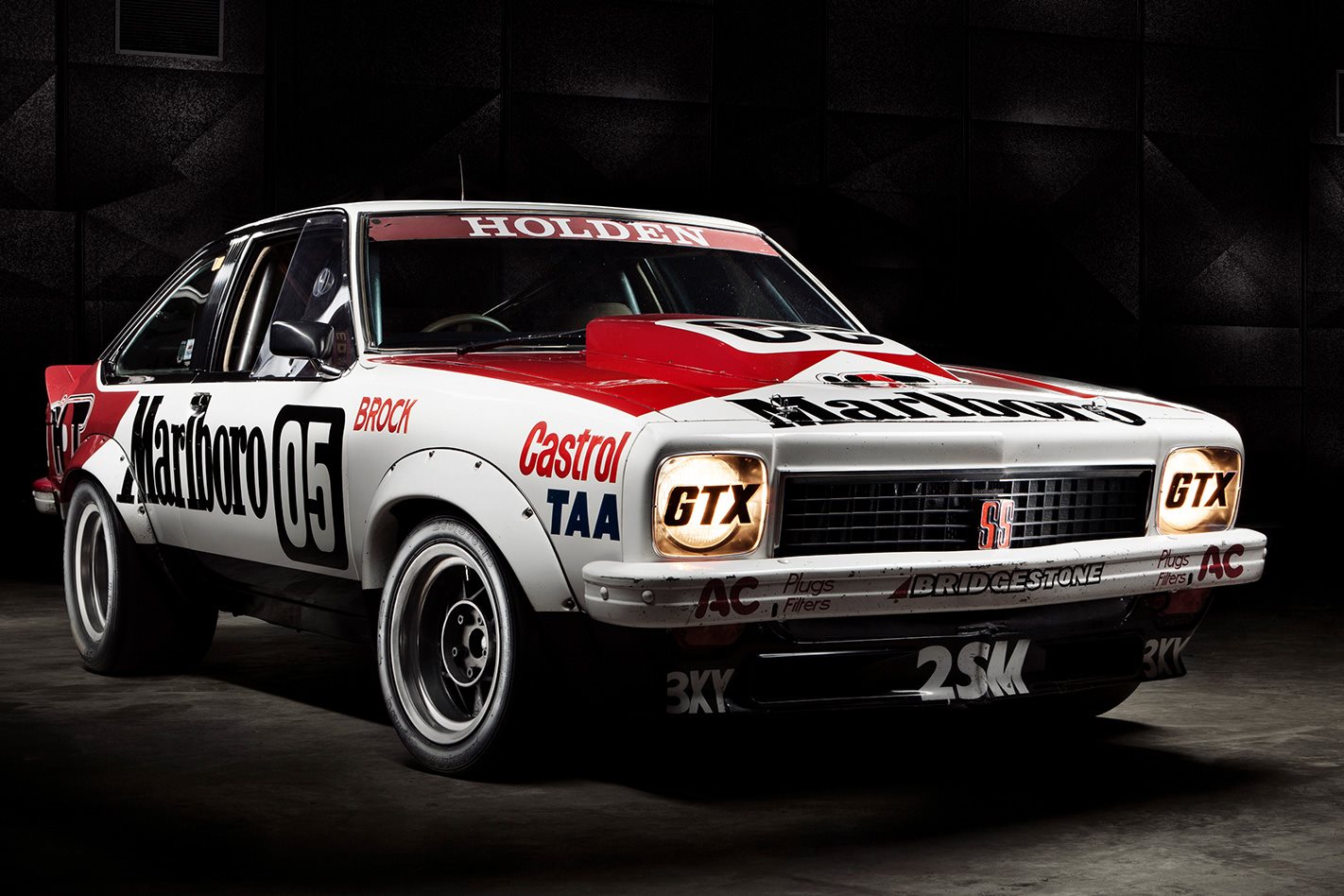UPDATE: This weekend’s Bathurst 1000 will be Holden’s last ever race as a brand, with the former manufacturer currently in the final stages of being shutdown by General Motors.
To mark the occasion, the factory Red Bull Holden Racing Team have a special thank you note dedicated to Holden racing fans on the squad’s pair of ZB Commodores.
While the Holden Commodore will continue to feature on the Supercars grid in 2021, it will no longer receive factory support, and is set to be replaced by the Chevrolet Camaro in 2022 as new ‘Gen3’ rules are introduced.
To celebrate Holden’s final race as a brand, we’ve decided to look back at its greatest racing achievements.

This article was first published in the Wheels November 2017 issue.
So often, over the course of its history, Holden and its heroes delivered where it really mattered, in the results of the Australian Touring Car (and V8 Supercars) Championship and The Great Race.
These treasured moments came thanks to a varied cast that included Norm Beechey, Bob Jane, John Harvey, John Fitzpatrick, Allan Grice, Larry Perkins, Win Percy, Bob Morris, Colin Bond, Jim Richards, Greg Murphy, Mark Skaife, Jamie Whincup, Craig Lowndes, Will Davison, Shane van Gisbergen, and even Allan Moffat…
Yet any examination of the standout Holden moments in motorsport will rightly be dominated by the lasting deeds of Peter Brock; not just a member of Australian motor racing royalty but the King himself, who is still revered 14 years after his death.
The workshop boffins and spanner-men toiling behind the scenes deserve to be recognised, too. Among them Harry Firth, John Sheppard, Neill Burns, Les Small, Ron Missen, Peter Molloy, Bruce Richardson, George Shepheard, Ian Tate, Wally Storey, Rob Benson, Ron Harrop, Ludo Lacroix, Mark Dutton, and David Cauchi.
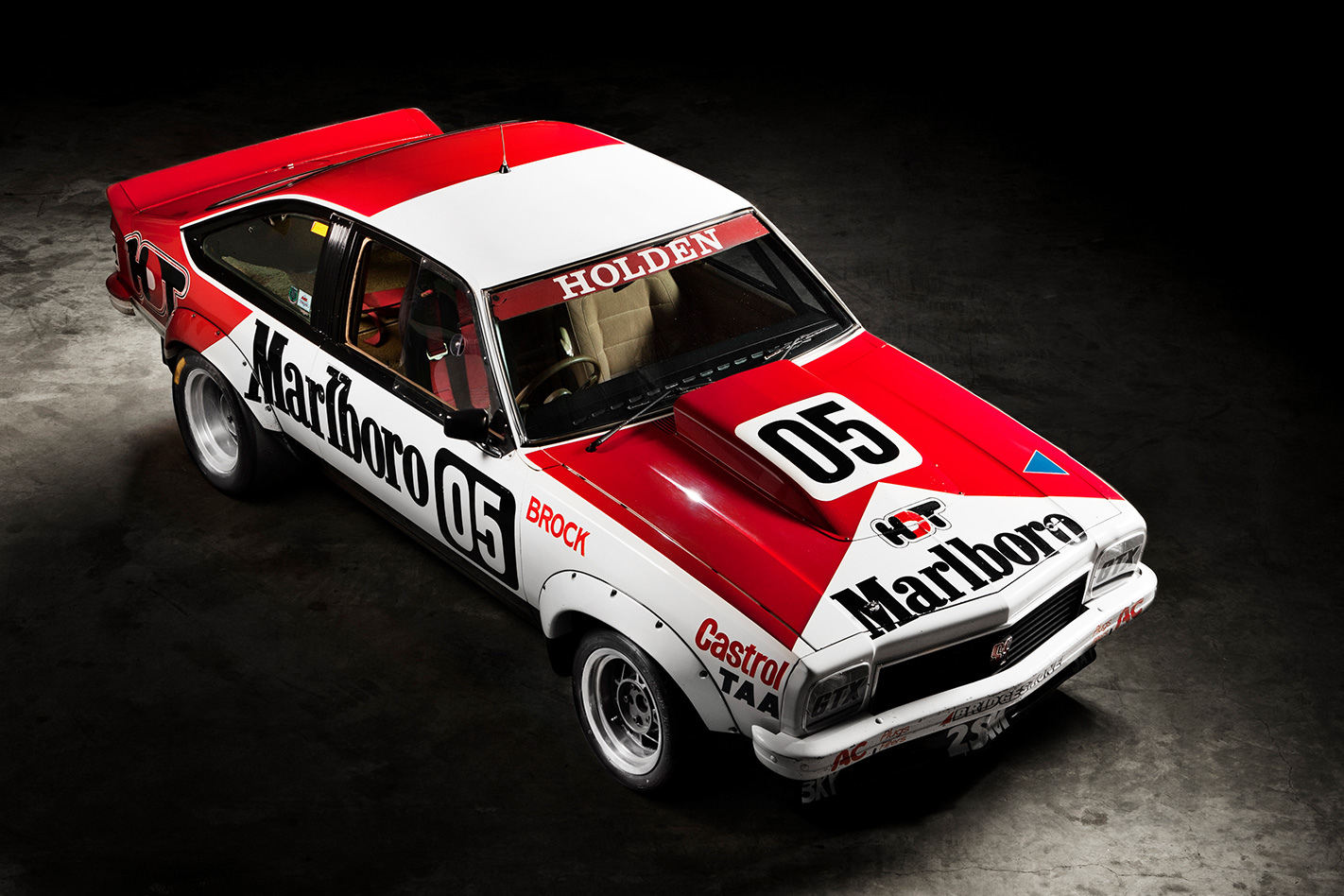
So too the little-known yet clever money shufflers at Fishermans Bend who frequently found ways to fund track campaigns – both official and unofficial.
In the early days, there were Humpy Holdens, and FC/FE victories; the EH had its moments. Then the V8 Monaro won Holden’s first ATCC in 1970.
The floodgates opened and stunning successes followed thanks to a brace of Toranas (XU-1s and A9Xs), and from 1980, the Commodore.
Now, with Holden pulling the shutters down on seven decades of local manufacturing, we’ve taken the opportunity to cherry-pick our Top 10 of The Lion’s more memorable – and occasionally bizarre – triumphs. The stuff we reminisce about when we come together with a drink in hand.
10. Moffat and Harvey win the 1987 World Touring Car Championship opener at Monza in a Brock car
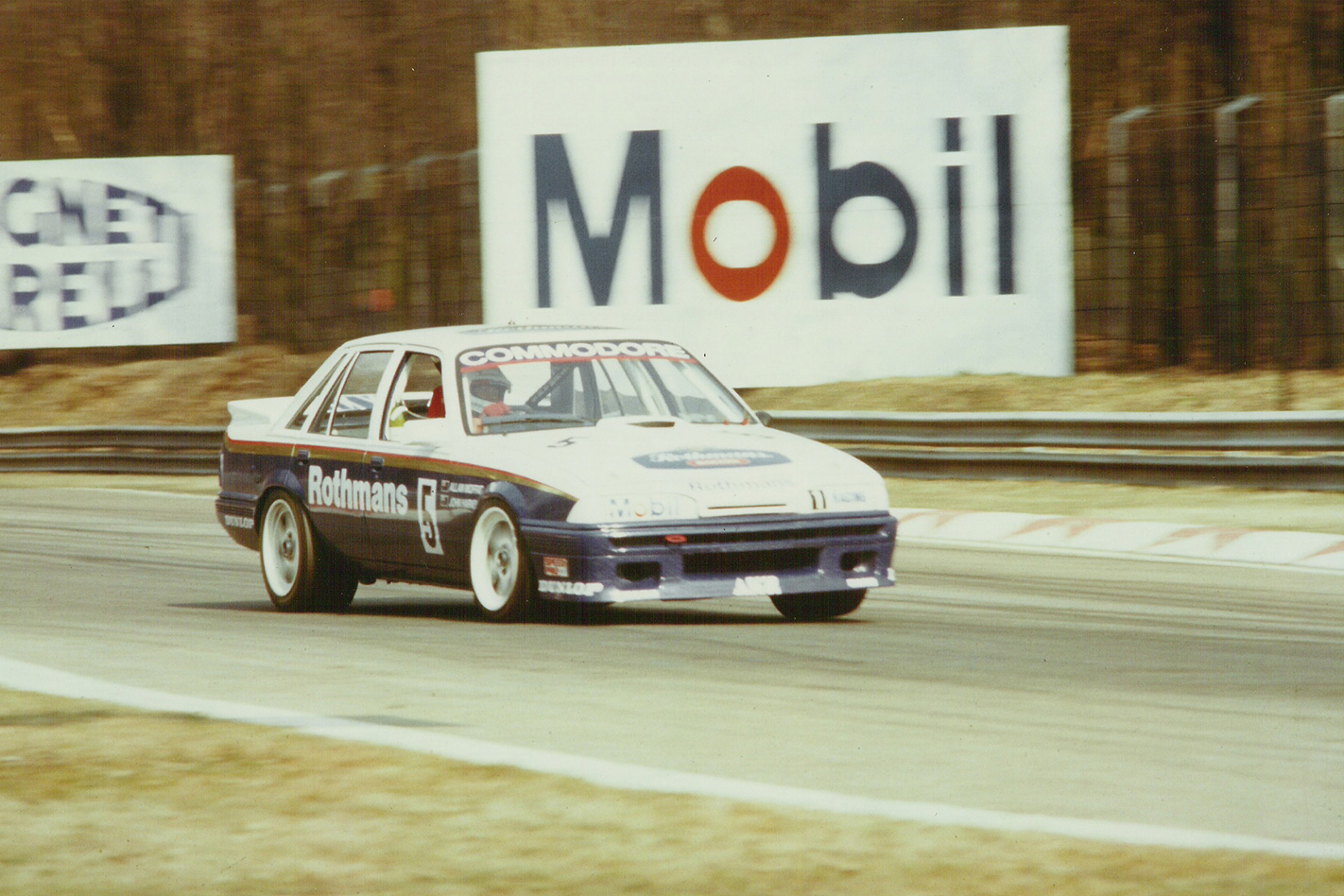
This is a strange story of how Allan Moffat, former Ford hero, entered a brand-new Peter Brock VL Commodore in the opening round of the inaugural 1987 World Touring Car Championship (WTCC) at Monza, Italy.
Due to be Brock’s 05 race car that season, the Commodore was put up for sale by the desperate-for-cash race ace in the aftermath of the Director and Energy Polarizer fiascos.
Using a front man, Moffat, an HDT driver the previous year, bought the car.
He had an audacious, perhaps deeply flawed, plan to get funding from loyal sponsors, ship the Commodore to Europe, find some mechanics and crew and, with his mate John Harvey, race in the opening round of the inaugural WTCC.
Despite an awkward time frame and an almighty rush, the VL made it to Monza with no spare engine and minimal spares. What was Moffat thinking?
Yet, the team with no visible means of support qualified ninth behind the pole-winning Ford Cosworth Sierras of Andy Rouse and a flotilla of new factory BMW M3s.
M3s dominated the race, filling the first six positions, with Moffat and Harvey taking a remarkable-in-the-circumstances seventh after a solid day out. And no real issues.
But in moves repeated months later at Bathurst, not everyone was happy with the outcome. A privateer BMW racer protested the six leading M3s for running lightweight panels, and the Aussies learned the following morning that disqualifications had elevated their Commodore to first place.
Subsequent races in the WTCC didn’t go so well for Moffat and Harvey until the Spa 24 Hours, where the pair bagged a gallant fourth.
Winning the first-ever race in the WTCC stands as a massive achievement, even with help from that disgruntled BMW privateer.
9. Davison does a ‘Bradbury’ after Whincup, Tander and McLaughlin tangle in the 2016 Bathurst 1000
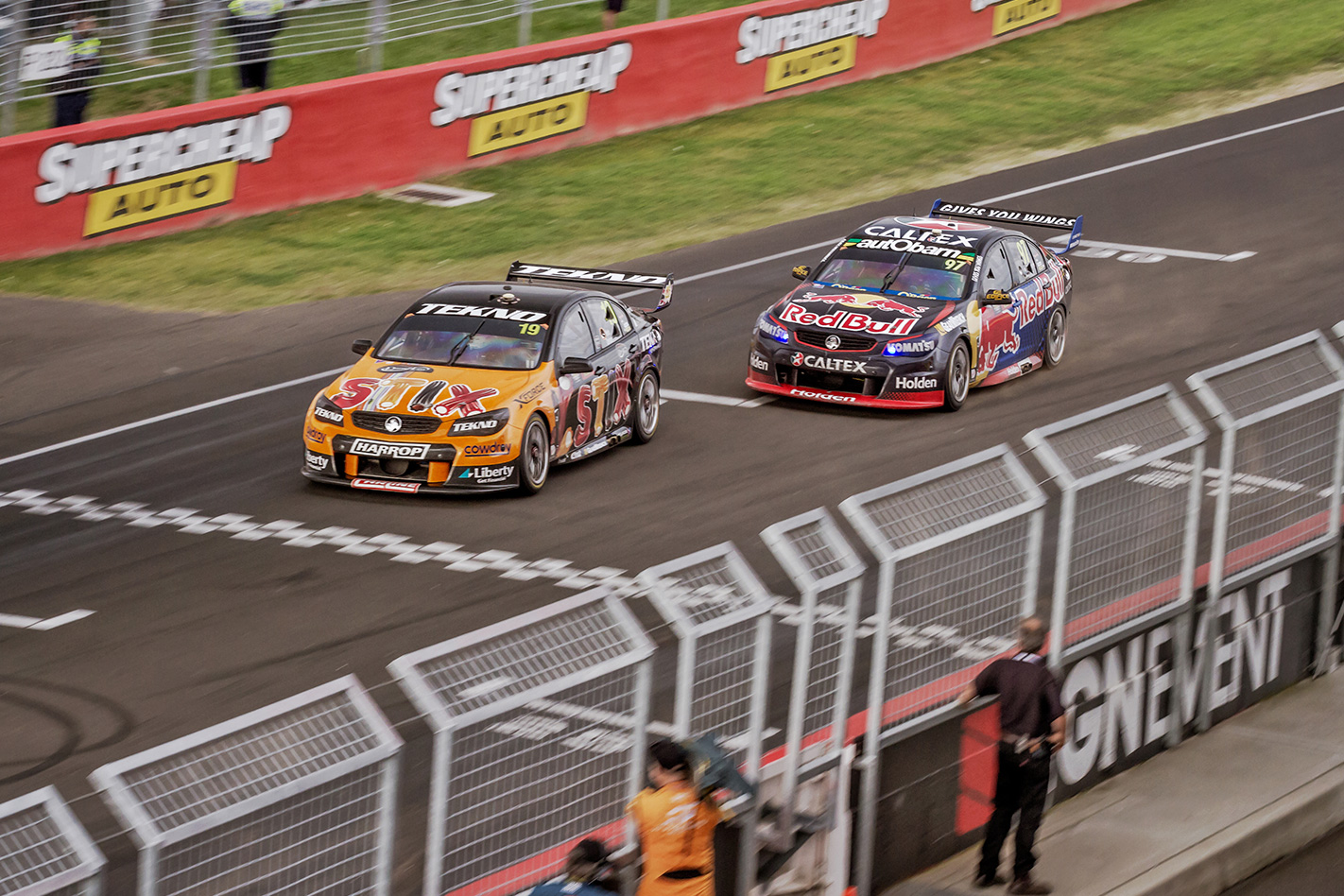
Much of this Bathurst 1000 was a bit of a snooze. Red Bull Holden’s Jamie Whincup and Paul Dumbrell had dominated from the start.
Pitting for the final time on lap 135 for fuel, tyres and fresh brake pads, Whincup relinquished the lead but had car pace and laps on his side in his chase to the flag.
He ruthlessly caught and passed Garth Tander’s HRT Commodore and set off after Scott McLaughlin’s Volvo. The six-time champ looked unstoppable.
Then came The Moment.
Into the Chase on lap 150, Whincup fired down the inside of McLaughlin who defensively edged left. Side by side, they banged together firmly, the Volvo ricocheting onto the outfield.
Whincup slowed in what looked like an attempt to redress, and Tander, still close, didn’t need a second invitation. The West Aussie looked to re-take the decelerating Whincup at the precise moment that McLaughlin returned to the track from his tour of the grass with a throttle full of right hoof. All three slammed together, Tander and McLaughlin cannoning off into a barrier. Whincup continued, but the time bomb in the control tower was ticking.
Whincup was hit with a 15-second penalty to be applied after the finish.
In the few laps remaining, he was no chance to gap Davison and the rest by 15 seconds.
The effective leader Davison, running short of fuel, was on an uncomfortable economy run ahead of Red Bull Racing’s relentless Shane van Gisbergen, looming large.
Davison held on for his second Bathurst 1000 win and the first for Webb and his small one-car Tekno Autosports outfit.
Said Davison: “That was so stressful. I knew if I lifted to save any more fuel that Shane was going to get me. It coughed coming into the last corner and I ran out of fuel while crossing the line.’’
It tossed up the closest finish in the history of The Great Race – 0.14sec.
8. Gallant Whincup holds off a relentless Reynolds in an epic 2012 Bathurst duel
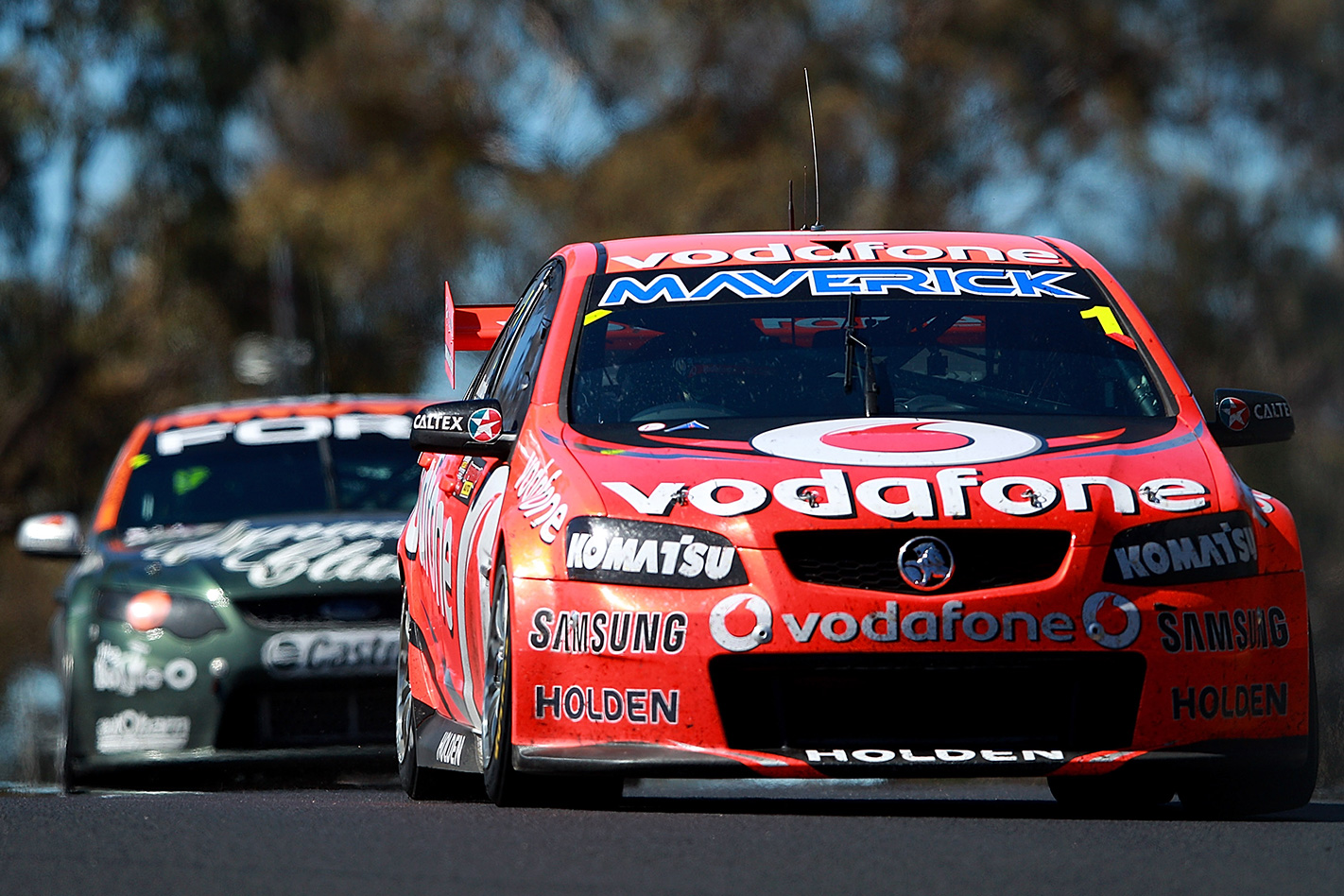
Vividly remembered for the almost-unbearable tension and sheer purity of the contest between Holden’s Jamie Whincup and Ford’s David Reynolds, the epic duel in the closing laps of the 2012 Bathurst 1000 had the crowd roaring like spectators at the Colosseum.
It was a classic fight between two drivers who for lap after lap were right on the limit whilst always respecting their opponent, the rising star against the established champion, Holden versus Ford.
Triple Eight’s Whincup and co-driver Paul Dumbrell had led for much of the 161 laps, while Rod Nash Racing/FPR’s Reynolds and team-mate Dean Canto had run in the top five all day.
But the race became a duel after the pair’s final pit stops, Reynolds closing on Whincup, who had been warned by his crew to save fuel when possible.
With four laps to run, Whincup led Reynolds by just 0.4sec. Going into lap 160, Reynolds was close, glued to the rear bumper of the Commodore and probing, looking for a way past. Whincup, juggling issues from overheating tyres to a dislodged window was also getting regular demands from engineer Mark Dutton to “conserve” while all the time staving off Reynolds, who had no such fuel concerns.
Reynolds was being urged in his earpiece to attack. A big slide out of the Dipper suggested he was already on the edge.
The crowd noise was deafening as the pair, separated by mere centimetres at times, headed into the last two laps.
Vulnerable on Conrod and Mountain straights, Whincup worked hard while respecting fuel economy to build enough of a margin before Forrest’s Elbow and Hell Corner.
Reynolds never gave up. In doubt to the final corner, the memorable, unpredictable 2012 Bathurst enduro went to Whincup and Dumbrell by 0.3sec. There was just 0.1 of a litre of fuel left in the Commodore’s tank.
7. A Grieving Whincup steals the win from his former flatmate in a 2012 Clipsal thriller
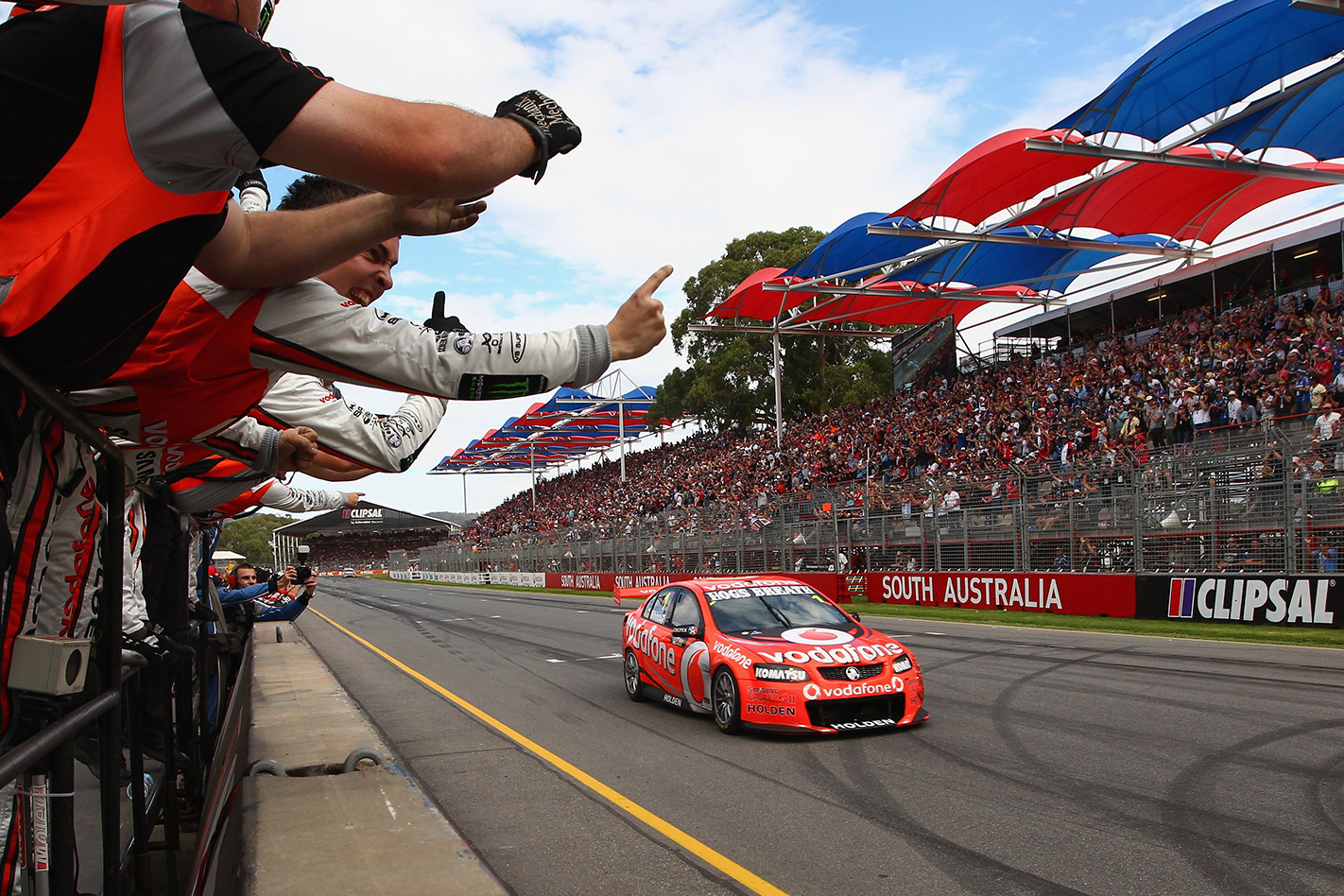
JAMIE Whincup has won more than 100 races in his stunning driving career.
Yet the memory Whincup treasures over all the other countless wonderful moments is the Saturday 250km leg of the 2012 Clipsal 500, the opening salvo of the V8 Supercars Championship of that year. He went on to win the golden double in 2012 – the championship and the Bathurst 1000.
The remarkable victory in the opening leg in Adelaide set up his standout year.
But first, some context…
Six days earlier, Whincup’s father David had passed away. David had been a long-time supporter of his son’s motor racing. Father and son were very close. Whincup called his dad “my best mate”.
Though he’d started on the front row of the grid at every Clipsal race since 2007, an understandably distracted Whincup could manage only fifth-fastest in qualifying for Saturday’s race.
Big crashes at Turn Eight had the effect of eliminating some rivals but also turning the 78-lap race into a tactical lottery.
Ford driver Will Davison took over up front as his close mate Whincup looked threatening, slamming out record laps in pursuit.
Into the final laps of the race, alternate strategies left the two at opposite ends of the spectrum, Davison painfully conserving fuel and Whincup maxxed out to make up the deficit of making a third pit stop. On fresh tyres and gassed up, Whincup zeroed in on sitting duck Davison, whose fuel-starved engine began spluttering half a lap from the chequer.
Whincup flew past his old flatmate at the hairpin on the final lap to land a very special win.
“I believe that’s the best race I’ve ever been involved in,” Whincup said later. As for his emotions, he added that “I pride myself on not bringing my personal issues to work”.
After many more wins since, he still cherishes that race as his finest memory.
6. Perkins and Ingall charge from Last to First in 1995 Bathurst
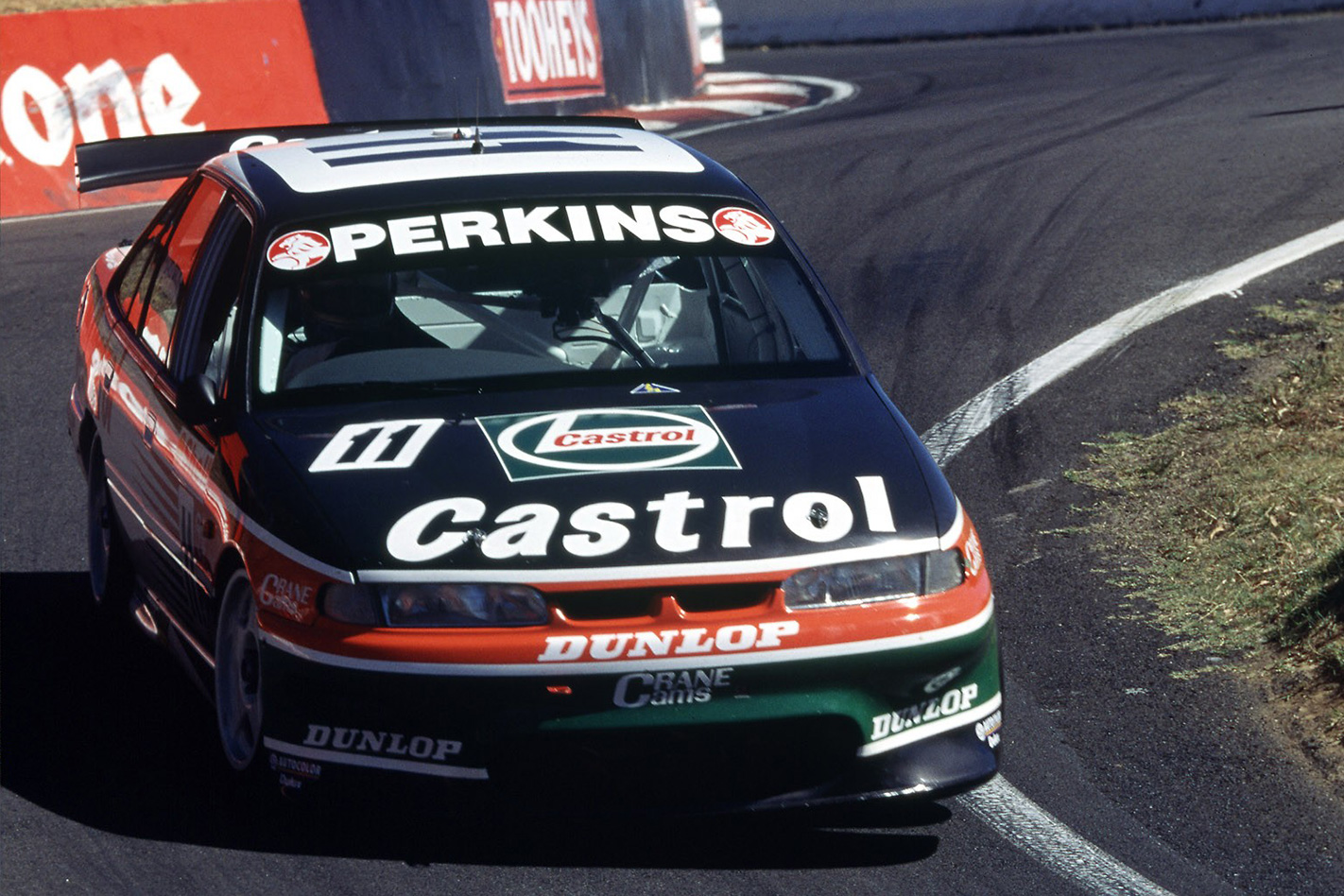
Hard-headed racer/engineer Larry Perkins won a six-pack of Bathurst 1000s but the best remembered of these accomplishments is his remarkable last-to-first in the 1995 race with co-driver Russell Ingall.
Chaz Mostert and Paul Morris managed the same trick for Ford in the 2014 Bathurst 1000, surging from 25th and dead last on the grid to snatch a fairytale victory.
But Perkins and Ingall did it for Holden 19 years earlier, among a bigger field of 32 cars.
This was the first Bathurst 1000 to be contested by a single class, which became V8 Supercars in 1997. Heading into turn one off the start line, third-on-the-grid Perkins’s VR Commodore banged fenders with the slow-starting HRT car of pole-sitter Craig Lowndes.
This tore the valve out of a tyre and reduced Perkins to a crawl. He slipped from third to last by the end of a very slow first lap, when he pitted to change the wheel/tyre.
A lap down already, it looked all over for one of the faves.
Steadily, Perkins and Ingall began to climb up the order. Safety car periods helped too, including one that gifted them some positive track position gains right after they had unlapped themselves.
With 20 laps left to run, Perkins/Ingall had edged back inside the top five.
At the wheel for the money stint, Perkins, sniffing a chance, charged towards a podium spot, overtaking Neil Crompton’s Commodore and the Falcon of Alan Jones to move into second place.
Up the road about seven seconds ahead, Glenn Seton’s Falcon looked uncatchable.
But this race habitually dealt a rough hand to Seton. With nine laps remaining, the Falcon’s engine dropped a valve, slowed dramatically and Seton retired.
Perkins went on to bag a famous victory, a win that appeared so unlikely on lap one of 161.
It was Bathurst win number four for Perkins; the first for Ingall, and time to shake that champagne till it popped.
5. John Fitzpatrick’s Lame Torana SL/R L34 limps to 1976 Bathurst 1000 glory
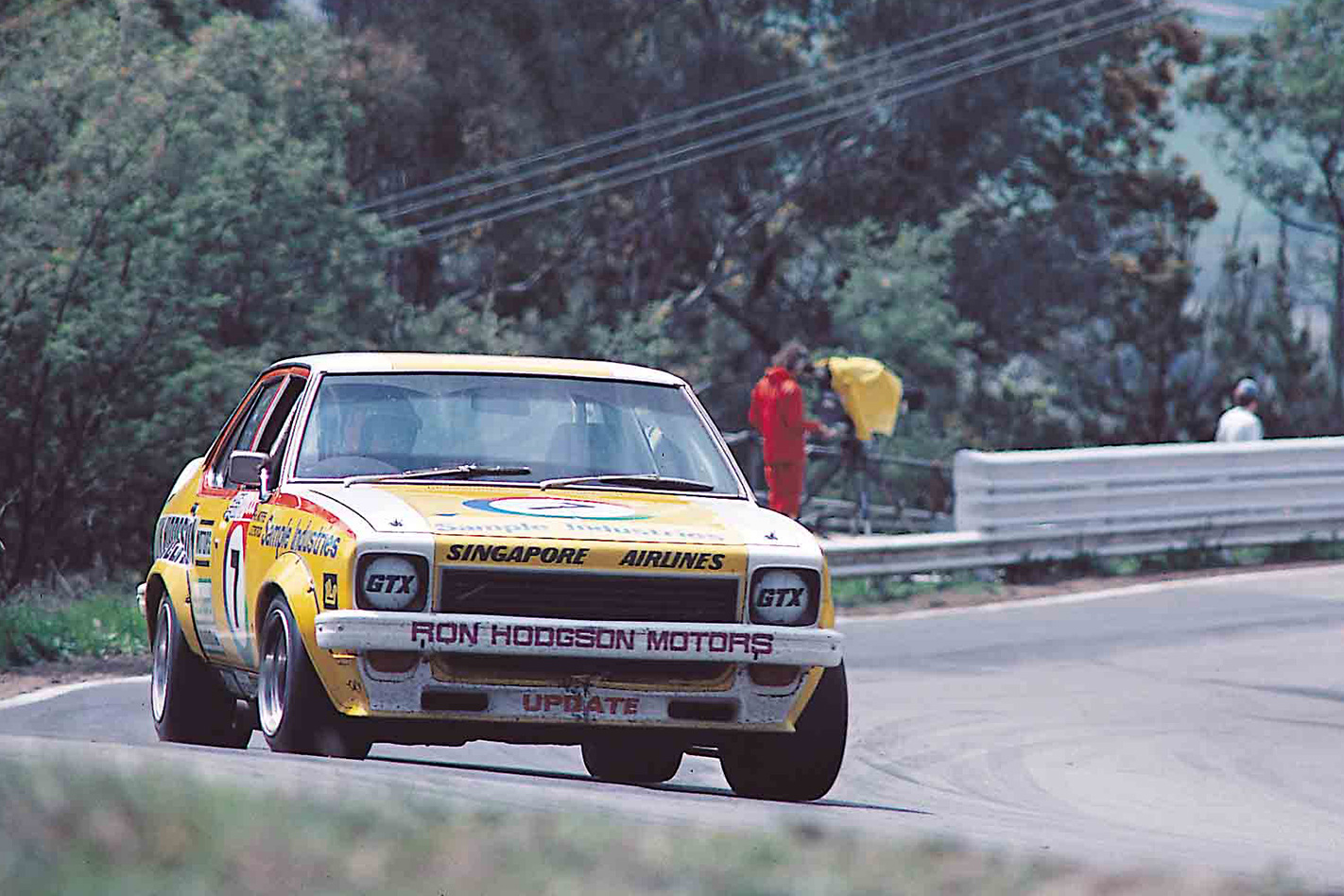
It’s the final laps of the most important race in the nation. Against the likes of the pole-winning Allan Moffat’s Ford Dealer Team, plus two Holden Dealer Team cars, Bill Patterson’s Team Brock, and the well-backed Craven Mild Racing, Bob Morris and British endurance star John Fitzpatrick have fought their way to the lead in their yellow Ron Hodgson-backed Torana SL/R 5000 L34.
They’re more than two minutes ahead of the Colin Bond HDT car.
At the wheel to bring it home is Fitzpatrick, the affable yet steely Briton with a reputation for being fast yet easy on the equipment. In the pits, his work done, was Morris, only in his early 20s but regarded as one of the fastest drivers in the game. He had never won a Bathurst classic. Could this be it?
Then, with four laps remaining, the leading Torana slows suddenly. Smoke pours from the car. Hearts sink in the Hodgson pit as Morris and the team contemplate the awfulness of it all.
The smoke gets worse. Television commentators, unsure of the problem, muse whether the car can finish, let alone stay out in front.
Peter Brock in his Bill Patterson-backed L34 charges into third and sets after Bond who is rushing closer to Fitzpatrick, as he deals with a blown gearbox seal that’s dropping oil on the clutch, causing it to slip badly.
Morris’s freckled face pales. Always an emotional type, he starts pacing up and down, fingers crossed. The TV cameras are loving the growing edginess. Chief mechanic Bruce Richardson bursts into tears.
Hardly daring to breathe, Fitzpatrick uses all his guile and experience to keep the ailing Torana moving.
Into the final lap, the tension is unbearable. Morris can barely look as Fitzpatrick coaxes their car up the hill one last time. Downhill is easier. He can coast home.
Champagne mixes with tears of joy…
4. Polarized Brock hijacks team car to win 1987 Bathurst 1000 … in 1988

For the first time (and only time), the 1987 Bathurst 1000 was a round of the World Touring Car Championship for Group A cars. A big deal.
The entries were loaded with European teams and gun drivers aboard the favoured Ford Sierra RS500s and BMW M3s. Aussie hopes were the Sierras entered by Dick Johnson and Allan Moffat.
The only Australian cars in the field were a bunch of VK and VL Commodores, but seemingly lacking their past potency in this international Group A guise.
Emerging shakily yet defiantly from an awful split with Holden over his belief in the mystical powers of the Energy Polarizer, Peter Brock – now a cash-strapped privateer – entered two VLs.
Giving lie to the myth that you had to be a Bathurst regular to go fast on The Mountain, European-based Sierra drivers Klaus Ludwig, Andy Rouse, Steve Soper, and Klaus Niedzwiedz took the four fastest spots in the Hardies Heroes Shootout. Brock couldn’t even qualify in the top 10.
Cheating allegations began flying with protests and counter-protests targeting illegal bodywork, tyres, and rocket fuel. It was like the Euros worked within a different set of rules.
Brock’s 05 Commodore failed on lap 34 but under cross-entry rules, he and David Parsons commandeered the second Mobil HDT entry from Peter McLeod.
As the laps ran down, Brock (and Nissan’s Glenn Seton), moved into third and fourth behind two Eggenberger Sierras, the locals spectacularly power-sliding on a drenched track.
And after 161 laps, Brock crossed the line in third place, the dramas of a turbulent year behind him.
But it wasn’t over. Protests left the race results in doubt until well into the following year when the two Eggenberger Sierras were ultimately rubbed out. Their crime: illegally modified wheel arches, which allowed larger wheels and tyres to be fitted to the cars.
Brock (and Parsons and McLeod) were declared winners of the 1987 Bathurst 1000, the ninth and final win for the King of the Mountain.
3. Beechey’s Monaro GTS 350 takes Holden’s first touring car championship in 1970
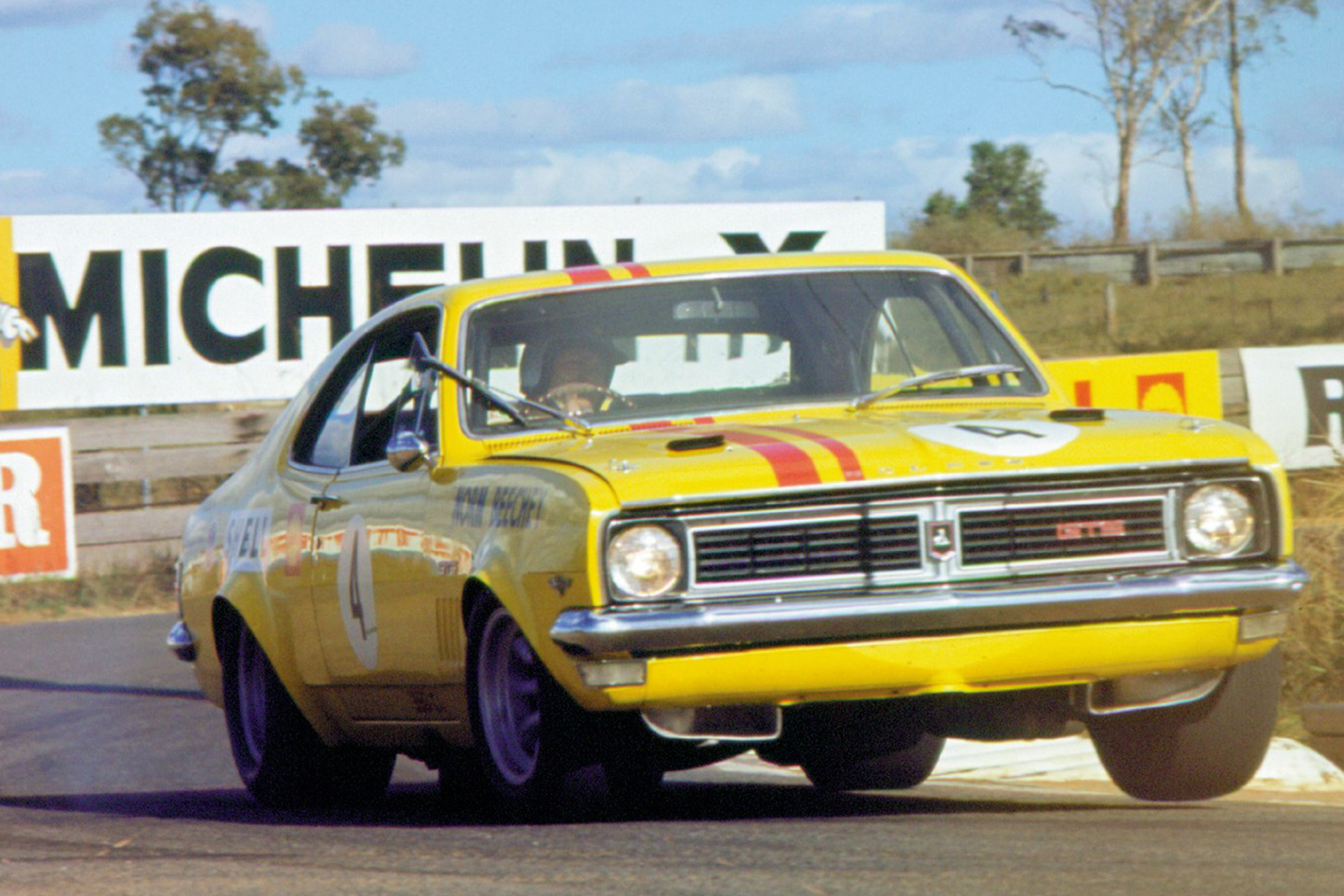
Since its 1960 inception and right through that decade, the Australian Touring Car Championship had been owned by imported cars – a string of four Jaguars initially, before a Ford Cortina preceded dominance by five rambunctious Ford Mustangs.
Norm Beechey had been one of the title winners (in 1965) in a Mustang but was obsessed with the challenge of creating an Australian car to take on the latest Trans-Am factory racers from the US.
The Brylcreemed Beechey’s flamboyant tyre-smoking, tail-out style had made him a fan favourite so Holden wisely signed him.
After unsuccessfully chasing the title with a 327 Holden Monaro in 1969, Beechey and his small engineering team stepped up to an HT GTS 350 Monaro Group C Improved Production Touring car to take on the big-buck US imports.
Built on a fraction of the budget that the American Ford and GM Trans-Am factory teams enjoyed, the yellow Shell Race Team HT took on and blitzed the Mustangs, Camaros and nimble Porsche 911s across the seven rounds of the 1970 championship.
Holden VT Commodore goes on a European vacation
After starting the campaign quietly with an eighth at Calder Park, a round won by Allan Moffat in his Mustang – the first for a non-Australian-born driver – three wins, at Bathurst, Sandown and Lakeside, and a second at Mallala followed for Stormin’ Norman, sealing the championship against the best rockets from the US and Europe, including team-mate and runner-up Jim McKeown’s 911S.
It was the first Australian title win for an Australian car, and the first championship title of 20 to date for Holden. Many adherents insist the yellow Monaro 350ci is the greatest Holden muscle racer ever created.
It was Beechey’s grandest, proudest moment in motorsport. “The Holden project was immense. Somebody claimed in print it cost us a six-figure sum to develop the car. Well, it wasn’t that high. We could have run a team of cars for that amount. But it did take up a hell of a lot of time and money,” Beechey told Sports Car World, before walking away from the limelight forever.
2. VB Commodore crushes the punishing 1979 Repco Trial – one, two, three
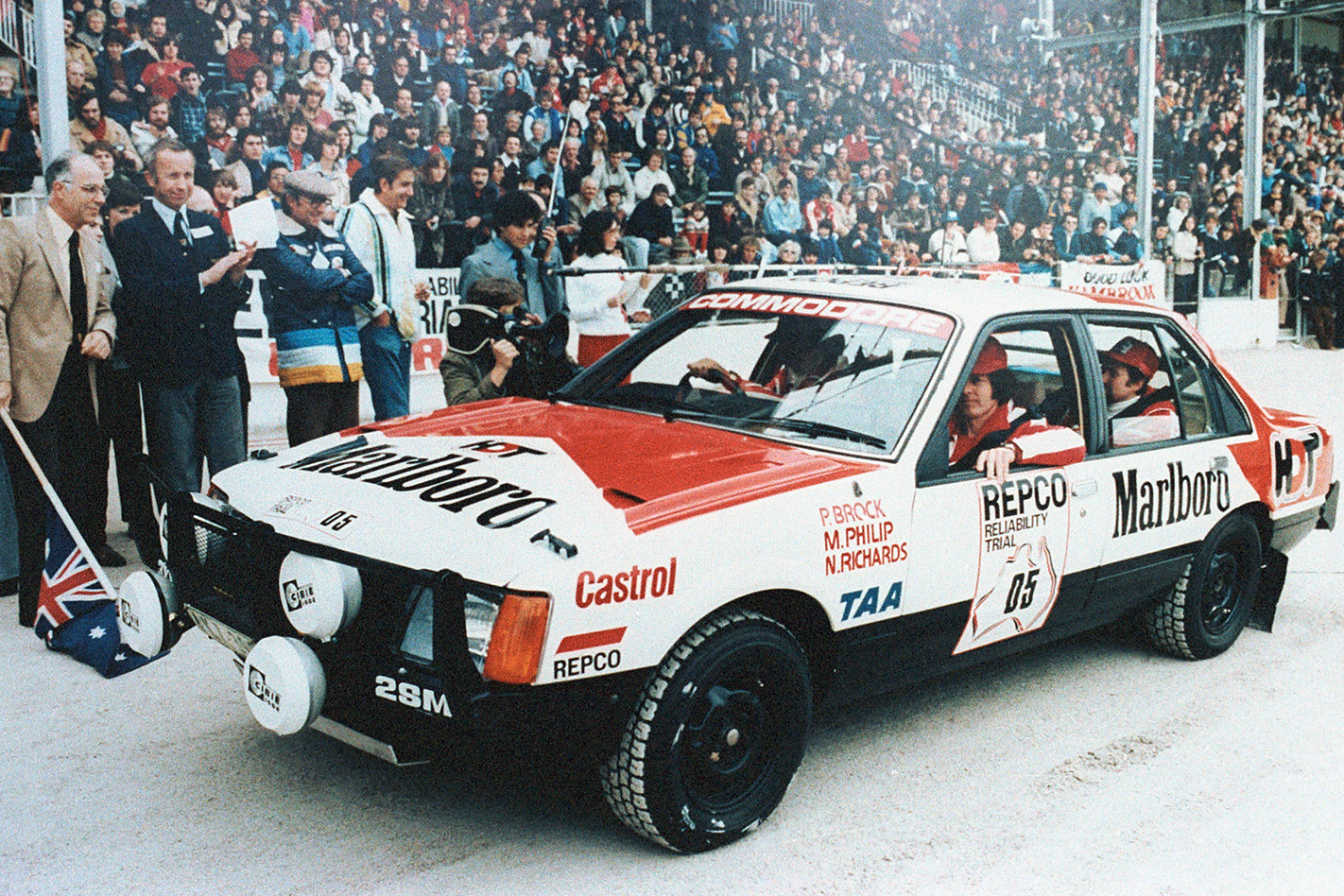
The1950s and 1960s outback round-Australia trials had captured the imagination of the car-loving public.
So the announcement of the last great trial; the longest, maddest and toughest of all – the 20,000km 1979 Repco Round Australia Reliability Trial – created massive interest in an era when family sedans were still king.
Peter Brock and George Shepheard convinced Holden it should tackle the Repco Trial, to show the consumers the toughness of the new VB Commodore.
Brock was rewarded with a drive of one of the three cars while Shepheard, vastly experienced in rallying as a navigator, engineer and organiser, was handed the herculean task of prepping the cars for the brutal torture test and then managing the whole effort.
Cars and competitors came from Germany and the UK and US. There were works-supported Ford Cortinas and Volvo Dealer Team 244s, but most of the 200-plus entries were a mix of clever rally privateers like Andrew Cowan and Geoff Portman, wily backyarders like Larry Perkins, and naive and wide-eyed wannabes about to get more than they anticipated.
The trial threw everything at the competitors along a route of largely unmade, rough tracks. It was almost inhumane. Cars crashed or fell apart. Two competitors died when their Peugeot rolled.
Portman’s Datsun and then Colin Bond’s Cortina led early but then Shepheard’s meticulous car preparation and clever back-up planning including air support paid dividends.
Brock forged to the lead of a Commodore one-two-three in the car-breaking, sleep deprived run up the west coast to Darwin.
Shepheard’s toughest task was controlling his star drivers. The head-strong Brock was reluctant to accept orders to slow down, while the local and overseas rally specialists were most keen not to be upstaged by an Aussie circuit racer.
Brock/Matt Philip/Noel Richards went on to a remarkable win, from Barry Ferguson/Wayne Bell/Dave Boddy in second and Rauno Aaltonen/Shekhar Mehta/Barry Lake third. A Commodore clean sweep. Joy for Holden.
1. Brock/Richards in an HDT Torana A9X Hatchback win 1979 Bathurst by six laps
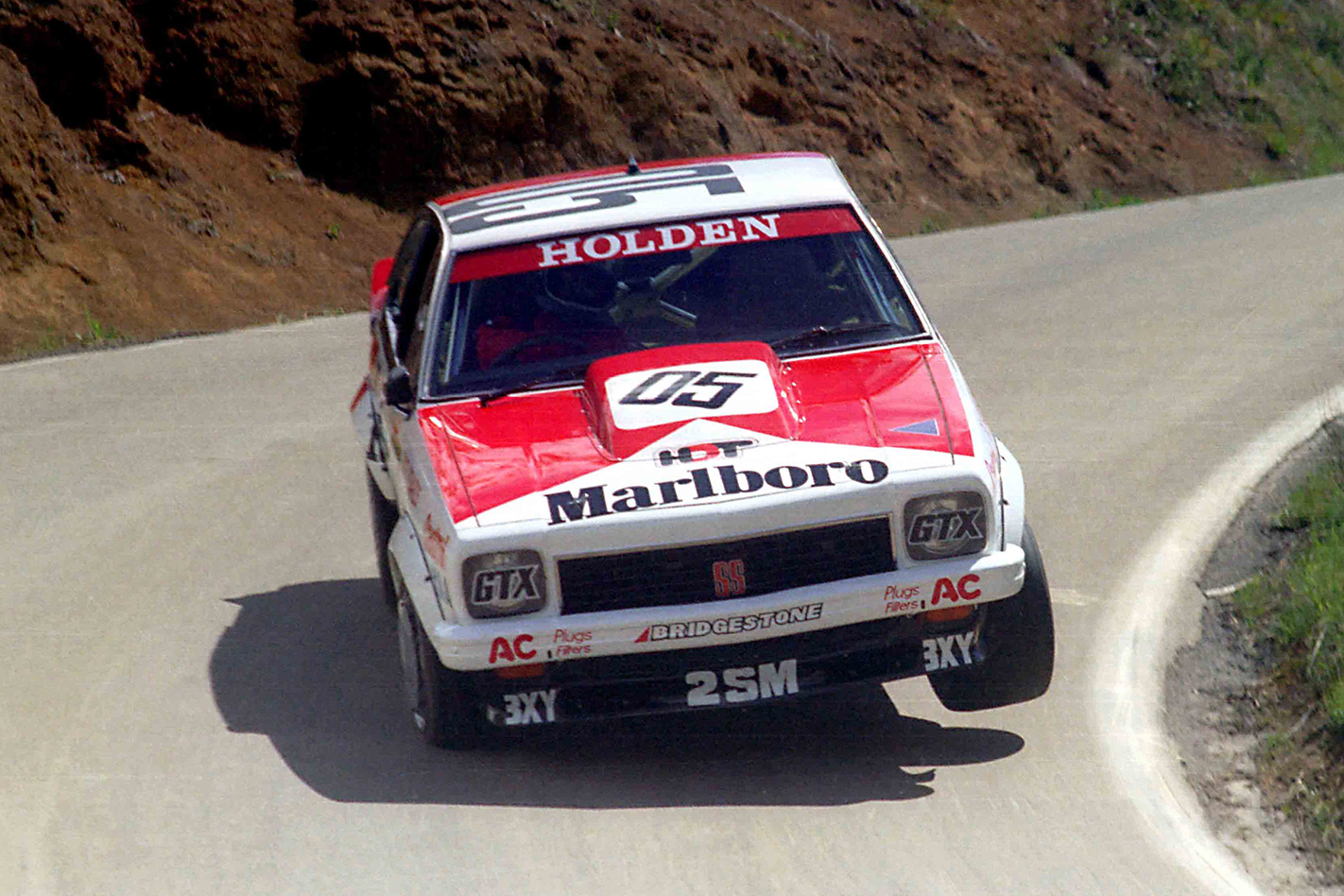
One month after winning the Repco Trial and washing the dust out of his coiffe, Peter Brock was back doing what he did so brilliantly: driving a touring car at Mount Panorama in the Hardie-Ferodo 1000.
It was touted as another classic contest between the Brock-led Holden horde of LX Toranas and the big Ford Falcons headed by the XC GS500 Hardtop of Allan Moffat. Ultimately, though, it was a no contest and a horror day for the Blue Oval.
Sharing a 308ci V8 Holden Dealer Team Torana A9X Hatchback with Jim Richards, Peter Perfect won the one-lap shootout for pole position and then on Sunday the pair led every lap in front of rapturous Holden fans, winning by six laps.
As was his way, Brock took the glory stints, the opener and the closer, and then to put the seal on a wonderful day at the track, smashed the lap record on the final circuit, arm on the window sill, nonchalantly waving to the appreciative crowd.
In an embarrassing thrashing of Ford, Toranas filled the first eight places. Moffat, John Goss, Colin Bond, Dick Johnson and Murray Carter all failed to last the distance. The best-placed Falcon was a dismal 14th.
It was a stellar sporting moment, huge in Holden’s motor racing history and vivid in the memories of those who watched trackside or at home via Channel Seven’s live coverage.
This was an era when motorsport enthusiasts appreciated the talent rather than the confected modern cookie-cutter parity show with compulsory pit stops.
Perhaps more than any other race, this epic Bathurst 1000 performance cemented Brock’s reputation as a peerless touring car racer. It was his fourth Mountain victory. Brock was to accumulate a further five in the coming years.
Not to take anything away from the Torana A9X and Brock’s talented Kiwi co-driver but, in 1979, you got the impression Perfect Pete could have done it single-handedly, in an LX Sunbird.

